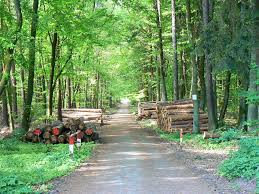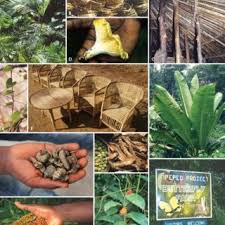Man’s need for wood started in pre-historic times. The Early man relied on wood for survival, shelter, tools, and hunting implements such as clubs, spears, bows, and arrows. The wild forests served sufficiently as the source of wood.
Inadvertently, in his search for wood from the forests, man discovered other benefits of forest trees, especially wood products and by-products, and innumerable beneficial services such as biodiversity conservation and recreation.
Thus, the roles of forests in providing significant economic, social, religious, and environmental values to man cannot be over-emphasized.

1. Forest Products
These include:
- Timber, sawn timber, used for various construction works including furniture-making;
- Fruits and other food items (tubers, leaves) to supplement man’s dietary nutrient requirements;
- Fodder tree species such as for livestock feeding;
- Ethno-medicare, through herbs used for medicinal purposes;
- Wildlife that supplies animal protein;
- Chewing sticks and sponges;
- Raw materials for handicraft and small-scale enterprises e.g. fibres of Pandanus used for weaving mats and baskets, and rattans for making furniture items;
- Non-timber forest products (NTFPs) such as culinary materials, dietary supplements, mushrooms, ferns, sponges, and charcoal;
- Fuel wood and pole from timber;
- Industrial raw materials such as latex, gum, and resins; and
- Provision of materials that are of cultural and religious significance e.g. leaves of Newbouldia laevis, used during traditional chieftaincy coronation; dedication of some forests to the worship of deities and traditional gods (sacred/fetish groves).
2. Forest Services
Modern forestry is aimed at assisting forests to:
- Provide and conserve biodiversity for wildlife habitats;
- Regulate natural water, including water flow and water erosion;
- Stimulate recreation, through eco-tourism;
- Enhance landscape and community protection;
- Provide employment;
- Provide aesthetically appealing landscapes;
- Provide a “sink” for atmospheric carbon dioxide (through carbon sequestration), to purify air and water, and prevent global warming by greenhouse gases;
- Detoxify and decompose wastes;
- Generate and renew soil fertility;
- Stabilize the climate and moderate temperature extremes; and
- Provide windbreak and shelterbelt;
- Provide foreign exchange;
- Provide employment opportunities;
Read Also: Aquaculture (Aqua farming) as a Fisheries Technique and Types of Aquaculture
Read Also: What You Should Know Before Venturing Into Fruit Farming






